
Platypezidae is a family of true flies of the superfamily Platypezoidea. The more than 250 species are found worldwide primarily in woodland habitats. A common name is flat-footed flies, but this is also used for the closely related Opetiidae which were formerly included in the Platypezidae.

The Opetiidae is a family of true flies of the superfamily Platypezoidea, one of two families commonly called flat-footed flies. The family contains only five extant species in two genera, Opetia from the Palearctic region and Puyehuemyia from Chile in South America. Several fossil genera have been assigned to the family, but many of these are likely to belong elsewhere in the Platypezoidea. Lonchopterites from the Early Cretaceous Lebanese amber and Electrosania from the Late Cretaceous New Jersey amber seem likely to be closely related to modern opetiids.

Xylota is a Holarctic genus of hoverflies similar in structure to the related genera Chalcosyrphus and Brachypalpoides. As the larvae are saprophytic they're usually found in rotting wood. The adult flies are generally associated with woodland and woodland edges and can often be seen running over the upper sides of leaves. Unlike other syrphids the adults of many species rarely visit flowers preferring instead to gather pollen from leaf surfaces. There are over 100 described species of which 12 can be found in Europe. Seven species have been recorded in Britain. Identification of species has been difficult and identifiction by photographs is risky.
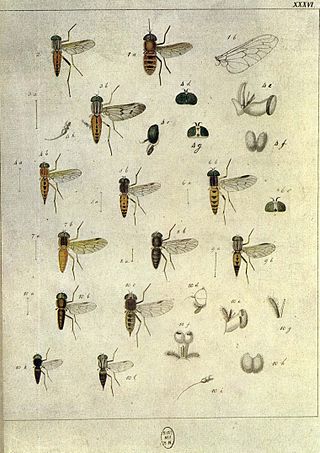
Pangonius is a genus within the horse-fly family (Tabanidae), often misspelled as Pangonia; Latreille originally published the name as Pangonius in 1802, emending it in 1804 to Pangonia, but the emendation is not valid under the International Code of Zoological Nomenclature. Some species that were earlier placed in this genus are now in the genus Philoliche.
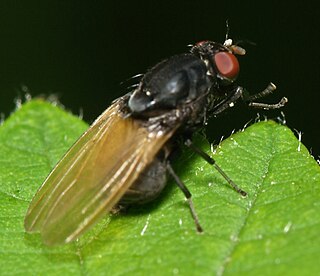
Minettia is a genus of small flies of the family Lauxaniidae. They have almost worldwide distribution, is one of the most species rich genera of the family with more than 120 described species. The Palaearctic is the most diverse with some 56 described species. The genus is divided into 3 subgenera.
Edward Luther Kessel was an American biologist known for his work as an entomologist and writings to reconcile science and religion.
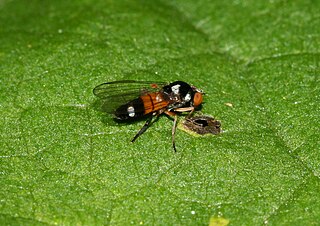
Callomyia is a genus of flies in the family Platypezidae. Some species can be found in Belgium.
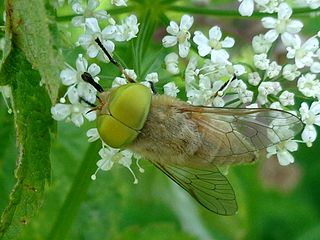
Atylotus is a genus of horse flies in the family Tabanidae.

Lindneromyia is a genus of flat-footed flies. There are at least 70 described species in Lindneromyia.

Xylophagus is a genus of flies in the family Xylophagidae.

Polyporivora is a genus of flat-footed flies. There are about eight described species in Polyporivora.
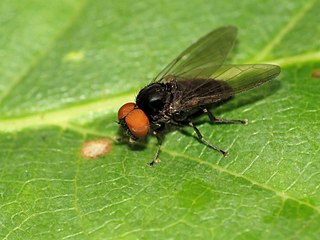
Platypeza is a genus of flat-footed flies. There are at least 30 described species in Platypeza.
Grossoseta is a genus of flat-footed flies. There are at least two described species in Grossoseta.
Seri is a genus of flat-footed flies in the family Platypezidae.

Agathomyia is a genus of flat-footed flies in the family Platypezidae.
Microsania is a genus of flat-footed flies in the family Platypezidae.
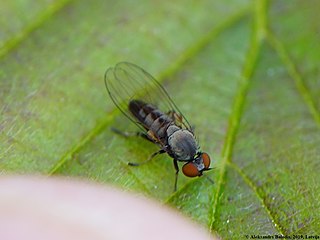
Agathomyia antennata is a species of flat-footed fly in the family Platypezidae.
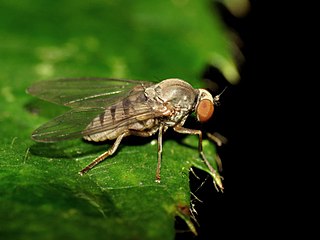
Protoclythia is a genus of flat-footed flies in the family Platypezidae.
Pamelamyia is a genus of flat-footed flies. There is one described species, Pamelamyia stuckenbergorum.














